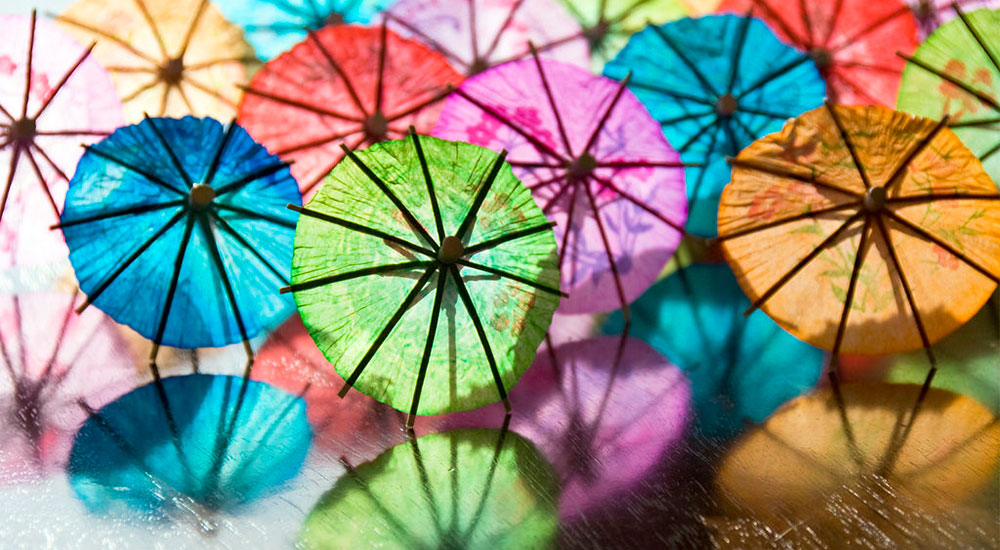I asked the bartender for a rum and coke. He looked at me flatly. Catching myself, I rephrased my request: “Cuba Libre, por favor.” Everyone in Havana was drinking it. I felt obliged to indulge the native pride in the Cuban national drink. Along with the daiquiri and mojito, few countries beside Cuba have produced such a memorable medley of beloved cocktails. I took mine and sipped its sweet, light-bodied taste in the still-humid Caribbean dusk.
Walking to the edges of the roof, sipping my rum and soda, to couch it in ‘unbranded keywords’, I peered down over the squares of the city, with their modest pedestrian traffic, lives coursing through this largest of Caribbean islands, beneath the banner of a defiant socialist revolution. The people possessed a surprisingly patriotic spirit, proud to claim Hemingway as their own, to regale you with their history of innovative mixology, their cloud-draped coffee plantations, their grayly lit Cohiba factories. One almost instinctively juxtaposed this curious nationalist fervor against the story of oppression inscribed into the architecture of the city. Havana houses, so many 17th century buildings, opulent relics of Spanish dominion, but that now saw their facades chipped and peeling, the entire edifice of colonial grandeur in disrepair. (In the Old Town one is advised to walk in the middle of the street to avoid the occasional collapsing building.)
Ten years on, it is this history of the overthrown ancient regime that one brand has turned to in its new campaign, excavating stories and imagery of Cuba’s revolution against Spanish colonialists in the 1800s. Under the banner of “Vivimos”, meaning ‘We live!’, a dervish of rebel images flourish in the ads. A man in an ivory shirt and fitted vest, a pair of golden spectacles and a well-groomed moustache, wields a sword and with a furious shout leads his charges toward liberty. Behind him a squall of fellow revolutionaries form congeries of rebellion. Broadcast television ads portray similar scenarios. Finely wrought in black and white, we see a romanticized version of the invention of the Cuba Libre, with an American soldier offering a Coke to a beautiful rebel, who defiantly mixes it with Bacardi from her thigh flask.
This is all the work of Bacardi, America’s top rum maker. The famous Cuban-born brand has recently dropped market share to second-place behind rival Captain Morgan. Evidently, the brand’s previous marketing strategy of producing sparkling imagery of gorgeous women in various states of undress had worn thin.
Some would attribute this decline to the success of Captain Morgan’s own campaign, which has brought Captain Henry Morgan back to life. In a recent ad for Captain Morgan’s Black rum, the camera opens on a lavish ball in Port Royal, Jamaica in 1661. A gorgeous young society woman dances with an aging toff with powdered hair and sagging jowls. She is bored senseless as he slowly twirls her through the motions of a conventional dance. Suddenly, Captain Morgan appears, sweeps her away and leads her through a secret passage to a roaring and raucous party full of younger, brasher, handsomer men and women—all drinking Captain Morgan and celebrating their lives. The tagline closes it: “To Life, Love & Loot.”
From the opening moment, the narrative unfolds with perfect clarity: The woman feels stifled by the conventions of modern society, by the demands of elders and the confinements of her class. Alas, Captain Morgan rum—embodied in a seasoned, smart and swashbuckling male—opens a secret passage to pleasure and a life well-lived. The tagline isn’t your conventional call to action. Instead, it wraps the rum in a much larger idea: That Captain Morgan embodies a different attitude to life—life as an adventure, lived fearlessly.
We’ve witnessed similar appeals elsewhere in the beverage industry, most notably with the Dos Equis “Most Interesting Man in the World” campaign, where the protagonist is far less an embodiment of the commoditized lager it represents, but an archetype to which men can aspire (even if they pretend not to take it seriously). A blending of both the Hemingway mythology and touches of Bond-like sophistication, Dos Equis has also acknowledged what Captain Morgan, and now Bacardi, have—and what Toby Whitmoyer, Bacardi’s VP of Marketing, noted: That young Millennial consumers are, “really looking for brands that have authenticity and a heritage and a story.”
There’s a thick vein of civic uncertainty and dissatisfaction that marketer’s have begun to mine in their efforts to align with the consumer mind. We’re still recovering from a brutal implosion of the housing market. The economy is sluggish. Job prospects are largely low-wage. According to former Assistant Secretary of the Treasury Paul Craig Roberts, in his scrupulously researched The Failure of Laissez Faire Capitalism, roughly 16 million college graduates will have fired forth from our universities between 2007 and 2014. They will find just over a million jobs waiting for them that require a degree. Scandals—from government spying to secret Wall Street schemes to the sordid escapades of unrepentant political candidates—have further undermined our faith in the credibility of authority.
It is no surprise that young people are rooting around for answers, for heroic models from the past and authentic voices in a sea of artificial appeals. How successful the Bacardi campaign will be remains to be seen. A jangling Caribbean score, a waxed lens and a revolution led by a rum scion—an interesting backstory for a brand better known for its provocative come-hither advertising—more vixens than renegades. But several beverage brands have put a proverbial finger to the wind and intuited a deep thirst for more inspirational stories than conventional party-themed alcohol ads deliver. Their work may strike a chord long buried in the American consumer mind, a rebellious spirit pulled up through the soil of memory by the looming question marks on the American horizon. Cuba Libre anyone? Vivimos?
Photo credit: A Sun Show by madlyinlovewithlife
